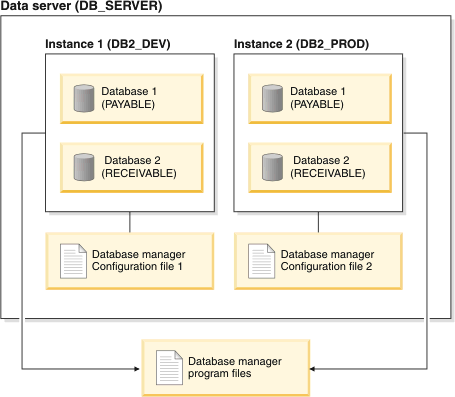DB2® databases are created within DB2 instances on the database server. The creation of multiple instances on the same physical server provides a unique database server environment for each instance.
For example, you can maintain a test environment and a production environment on the same computer, or you can create an instance for each application and then fine-tune each instance specifically for the application it will service, or, to protect sensitive data, you can have your payroll database stored in its own instance so that owners of other instances (on the same server) cannot see payroll data.
The installation process creates a default DB2 instance, which is defined by the DB2INSTANCE environment variable. This is the instance that is used for most operations. However, instances can be created (or dropped) after installation.

You also must be aware of another particular type of instance called the DB2 administration server (DAS). The DAS is a special DB2 administration control point used to assist with the administration tasks only on other DB2 servers. A DAS must be running if you want to use the Client Configuration Assistant to discover the remote databases or the graphical tools that come with the DB2 product, for example, the IBM® Data Studio. There is only one DAS in a DB2 database server, even when there are multiple instances.
Once your instances are created, you can attach to any other instance available (including instances on other systems). Once attached, you can perform maintenance and utility tasks that can only be done at the instance level, for example, create a database, force applications off a database, monitor database activity, or change the contents of the database manager configuration file that is associated with that particular instance.